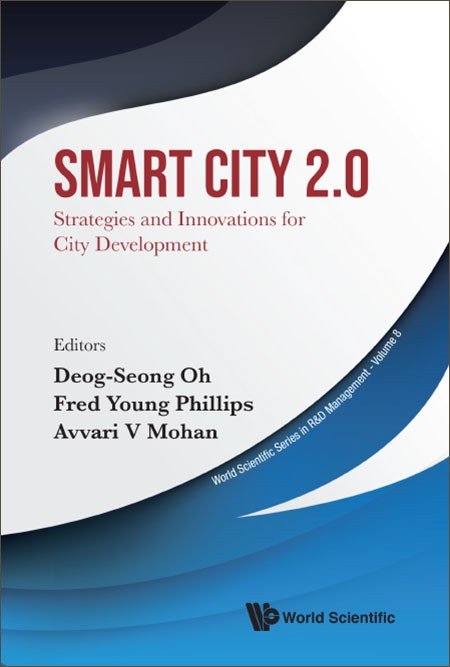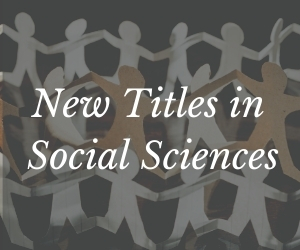Almost a century since the idea of creating more humane — more human-centric — cities was brought to the fore, how far has mankind progressed towards creating a true "city with a heart"? How far off are we, and what can we do to close the gap?
The first generation of smart cities showed the limits of top-down planning, in which cities contracted out design and implementation to IT providers. As residents resented paying high taxes for "smart" urban features that they did not want or use, it became plain that smart cities were not sustainable, and needed to be re-thought. "Smart City 2.0" starts the design process with understanding the needs of human residents. Little has yet been written about smart cities' second wind.
This book offers leading-edge, international perspectives on Smart City 2.0. It offers an overview of the sustainable smart city concept, presents leading experts' latest thinking on strategies for a new generation of smart cities, and showcases eight implementation case studies from seven countries. All chapters are contributed by prominent, leading thinkers and practitioners from a dozen countries, representing both the developed and the developing worlds.
Related Link(s)
Sample Chapter(s)
Foreword
Introduction
Chapter 1: Policies and Rules of Engagement in Traditional and Smart Cities
Chapter 10: The Bright and Dark Sides of Open Innovation in Public Organizations: Evidence from Smart City Projects
Contents:
- Overviews:
- Policies and Rules of Engagement in Traditional and Smart Cities (Kelechi A Kalu)
- The Conceptual Framework and Key Strategies of Smart City Planning for Sustainable Urban Development (Seo-Jeong Lee, Eung-Hyun Lee, Deog-Seong Oh)
- Strategies of Smart City Innovation:
- How to Prepare for the Wicked Problems of the Postnormal Era: Introducing an Evaluation Model for Vucability Improvement (Ilkka Kakko)
- Understanding GARLICs: An Innopreneurship Platform for Smart Cities (Arcot Desai Narasimhalu)
- Human-centric Smart City Development Strategy in Taiwan (Chien-Yuan Lin)
- Did Users Co-create Innovation in Smart City Initiatives? A Case in Japan (Jun Yamashita)
- Science and Technology Park Development in the Context of Smart Cities (Raimund Bröchler, Mathias Seifert)
- Korean Technoparks: An Evolving Integrated Business Platform (Jaehoon Rhee)
- Impacts of the First to Second Generation of Smart City Initiatives in Japan (Jun Yamashita)
- The Bright and Dark Sides of Open Innovation in Public Organizations: Evidence from Smart City Projects (Stefano Bresciani, Alberto Ferraris, Gabriele Santoro)
- Why Do Regional Innovation Systems Not Have Comprehensive Information Support? (Fred Young Phillips, Benjamin Matheson, Urusha Thapa, Yun Jeong Choi, J Byun)
- Best Practices:
- Smart City Strategy for Building an Innovation Platform: The Daedeok Innopolis (Sung-Kwang Yang)
- Smart City Energy Inclusion, Towards Becoming a Better Place to Live (Sang-Ryong Cha)
- Applications of a Smart City for Sustainable Urban Regeneration (Sunghee Lee, Jongkon Kim, Youngchul Kim)
- The Smart City in Developing Countries: Experiences from Brazil (Daniel Esashika, Gilmar Masiero, Yohann Mauger)
- Virtual Reality for Disaster Management and Recovery (Sheridan Tatsuno)
- Smart Sustainable Cities and Entrepreneurship: A Proposal for a Non-aggregative Approach (Enrico Ivaldi, Andrea Ciacci)
Readership: City planners and city officials, students and researchers in the fields of urban planning and information technology, Information infrastructure consultants and providers and international banks and aid agencies.

Deog-Seong Oh is President of Woosong University and former President of Chungnam National University, both in Daejeon, South Korea. Dr Oh is expert in public and urban policy, economic development, and technology commercialization. Dr Oh is a member of the UNESCO High Panel on Science for Development, and Organizing Committee Chair for UNESCO's Global Innovation Forum. He is also the chief editor of APPR (Asian Pacific Planning Review). He was formerly Secretary-General of World Technopolis Association (2004–2016) and vice president of the Korean Planners Association (KPA) and Korean Urban Management Association (KUMA). He received a Master of Urban Planning in 1979 and a Master of Science in Architecture in 1981 from Seoul National University, Korea. He earned his Ph.D. in Urban Planning from Hanover University, Germany in 1989. He did his post-doctoral research at University of Sheffield, UK in 1993. He joined the faculty of spatial planning at University of Dortmund as a visiting professor from 2002–2004. His recent research interests are on sustainable development and urban regeneration, regional innovation with technopolis and high-tech cluster, etc. He has published 250 papers in international and national journals on urban planning and design, sustainable development and regional innovation.

Fred Phillips is currently on faculty at the University of New Mexico, USA, and Tongji University in Shanghai, China. He is the 2017 winner of the Kondratieff Medal, awarded by the Russian Academy of Sciences. He is President-Elect of Academy of Innovation, Entrepreneurship, and Knowledge (ACIEK), Spain, a society of innovation and entrepreneurship scholars, and he coordinates TANDO, a think-tank recently spun out of the University of Texas at Austin, USA. Fred is a Fellow of the Portland International Center for Management of Engineering and Technology (PICMET) and is Visiting Professor at the State University of New York, Stony Brook. Dr Phillips is Editor-in-Chief Emeritus of Elsevier's international journal Technological Forecasting & Social Change. He authored the textbook Market-Oriented Technology Management (Springer, 2001), the popular title The Conscious Manager: Zen for Decision Makers (General Informatics, 2003), a book on high-tech economic development, The Technopolis Columns (Palgrave, 2006), and What About the Future? (Springer, 2019). Dr Phillips has consulted worldwide on technology based regional development. He is a founder of the Austin Technology Council, and was also a Board member for the Software Association of Oregon. Dr Phillips attended The University of Texas, USA and Tokyo Institute of Technology, Japan, earning his Ph.D. at Texas (1978) in mathematics and management science.

Avvari V Mohan is an Associate Professor of Strategy & Innovation, Director of Research and Malaysia Lead for the International Centre for Corporate Social Responsibility in the Nottingham University Business School (NUBS) at the University of Nottingham Malaysia (UNM). Dr Avvari received his doctorate in Management of Innovation from the Department of Management Studies, Indian Institute of Science (IISc), Bangalore, India, following which he visited South Korea on a Research Fellowship at the Korea Advanced Institute of Science and Technology (KAIST). Prior to joining UNM, he served as a member of the Faculty of Management at Multimedia University, Cyberjaya, Malaysia. His research interests are in the areas of Strategy and Innovation with a special interest in Innovation Systems — i.e. inter-organisational linkages that enable organisations to innovate and contribute to sustainable development. He has published his work in international journals and reports for international agencies. He is on the editorial panels of international journals in the area of Innovation and Policy. Dr Avvari has served as a council member of the Consumer Forum for the Malaysian Communications & Multimedia Industry, as a recourse person in World Technopolis Association (WTA)-UNESCO workshops, Innovation Auditor for the Malaysian Industry-Government Group for High Technology (MIGHT), Malaysia and more recently as a UNESCO Expert for entrepreneurship and innovation.









